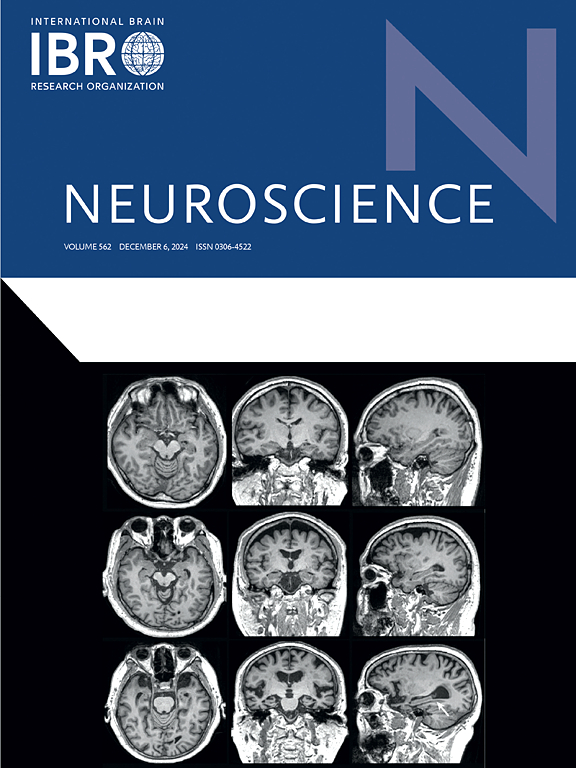Long term effect of COVID-19 on brain metabolism and connectivity
IF 2.9
3区 医学
Q2 NEUROSCIENCES
引用次数: 0
Abstract
Aims
After 3 years from the beginning of SARS-CoV-2 pandemic, a substantial proportion of affected patients still present at least one symptom after infection. Given that: magnetic resonance imaging studies up to two years after COVID-19 reported changes in white matter (WM) microstructure and in functional connectivity; WM associates with glutamate and N-acetyl-aspartate levels in BD; the link between cognitive impairment and WM integrity, the aim of the study was to investigate metabolites associations with alterations in structural and functional brain connectivity and cognition in 64 COVID-19 survivors and 33 healthy controls (HC).
Methods
We compared WM microstructure and metabolites levels between individuals recovering from COVID-19 and HCs. Then, we investigated the associations between WM and glutamate and N-acetyl-aspartate in the two groups.
Results
Patients showed: higher levels of glutamate and NAA compared to HCs with a positive effect on cognitive complaints; higher fractional anisotropy (FA), and lower radial (RD) and mean diffusivity (MD); glutamate and N-acetyl-aspartate significant positive associations with FA, and a negative one with MD and RD. FA levels moderated the relation between the glutamate and cognitive deficits. Finally, N-acetyl-aspartate associated with higher rs-FC between VOI and the posterior cingulate gyrus in individuals recovering from COVID-19.
Conclusions
Our findings suggest that a process of brain repair and remyelination, as suggested by higher levels of glutamate and N-acetyl-aspartate and by higher measures of WM microstructure, may occur after SARS‑CoV‑2 infection which may help the recovery from long COVID-19 symptoms such as cognitive impairment.
COVID-19对脑代谢和连通性的长期影响。
目的:在SARS-CoV-2大流行开始3 年后,相当大比例的感染患者在感染后仍出现至少一种症状。鉴于:在COVID-19后长达两年的磁共振成像研究报告了白质(WM)微观结构和功能连接的变化;WM与BD中谷氨酸和n -乙酰-天冬氨酸水平相关;认知障碍与WM完整性之间的联系,该研究的目的是研究64名COVID-19幸存者和33名健康对照(HC)中代谢物与大脑结构和功能连接和认知改变的关联。方法:我们比较了COVID-19和hc恢复期患者WM的微观结构和代谢物水平。然后,我们研究了两组WM与谷氨酸和n -乙酰-天冬氨酸之间的关系。结果:患者显示:与hc相比,谷氨酸和NAA水平较高,对认知疾患有积极作用;分数各向异性(FA)较高,径向(RD)和平均扩散系数(MD)较低;谷氨酸和n -乙酰-天冬氨酸与FA呈显著正相关,与MD和RD呈显著负相关。FA水平调节谷氨酸与认知缺陷的关系。最后,n -乙酰-天冬氨酸与COVID-19恢复期个体VOI和后扣带回之间较高的rs-FC相关。结论:我们的研究结果表明,在SARS‑CoV‑2感染后,可能会发生高水平的谷氨酸和n -乙酰-天冬氨酸以及高水平的WM微结构所提示的脑修复和髓鞘再生过程,这可能有助于从长期的COVID-19症状(如认知障碍)中恢复。
本文章由计算机程序翻译,如有差异,请以英文原文为准。
求助全文
约1分钟内获得全文
求助全文
来源期刊

Neuroscience
医学-神经科学
CiteScore
6.20
自引率
0.00%
发文量
394
审稿时长
52 days
期刊介绍:
Neuroscience publishes papers describing the results of original research on any aspect of the scientific study of the nervous system. Any paper, however short, will be considered for publication provided that it reports significant, new and carefully confirmed findings with full experimental details.
 求助内容:
求助内容: 应助结果提醒方式:
应助结果提醒方式:


